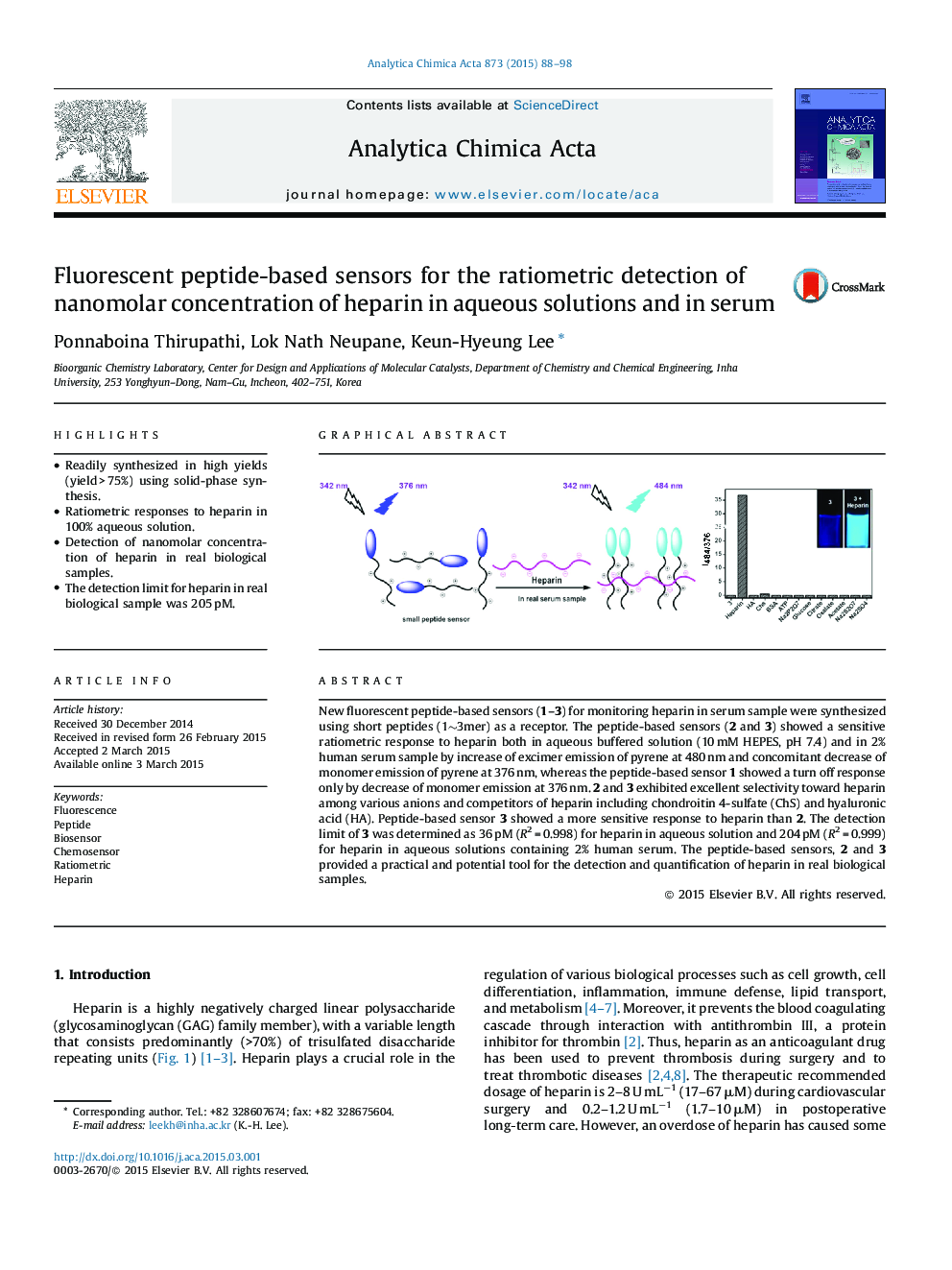| کد مقاله | کد نشریه | سال انتشار | مقاله انگلیسی | نسخه تمام متن |
|---|---|---|---|---|
| 1163824 | 1490959 | 2015 | 11 صفحه PDF | دانلود رایگان |
• Readily synthesized in high yields (yield > 75%) using solid-phase synthesis.
• Ratiometric responses to heparin in 100% aqueous solution.
• Detection of nanomolar concentration of heparin in real biological samples.
• The detection limit for heparin in real biological sample was 205 pM.
New fluorescent peptide-based sensors (1–3) for monitoring heparin in serum sample were synthesized using short peptides (1∼3mer) as a receptor. The peptide-based sensors (2 and 3) showed a sensitive ratiometric response to heparin both in aqueous buffered solution (10 mM HEPES, pH 7.4) and in 2% human serum sample by increase of excimer emission of pyrene at 480 nm and concomitant decrease of monomer emission of pyrene at 376 nm, whereas the peptide-based sensor 1 showed a turn off response only by decrease of monomer emission at 376 nm. 2 and 3 exhibited excellent selectivity toward heparin among various anions and competitors of heparin including chondroitin 4-sulfate (ChS) and hyaluronic acid (HA). Peptide-based sensor 3 showed a more sensitive response to heparin than 2. The detection limit of 3 was determined as 36 pM (R2 = 0.998) for heparin in aqueous solution and 204 pM (R2 = 0.999) for heparin in aqueous solutions containing 2% human serum. The peptide-based sensors, 2 and 3 provided a practical and potential tool for the detection and quantification of heparin in real biological samples.
Figure optionsDownload as PowerPoint slide
Journal: Analytica Chimica Acta - Volume 873, 11 May 2015, Pages 88–98
